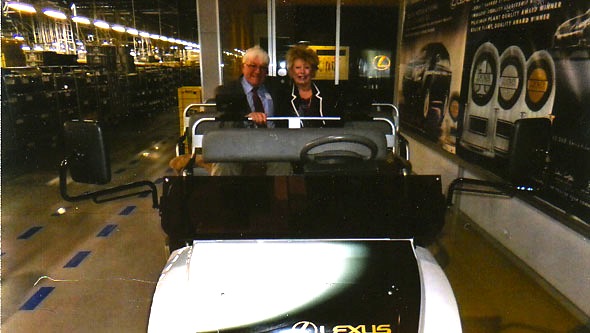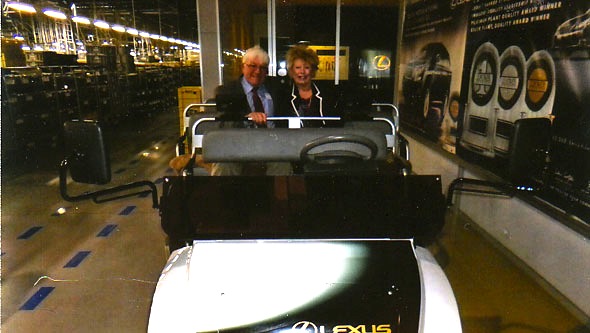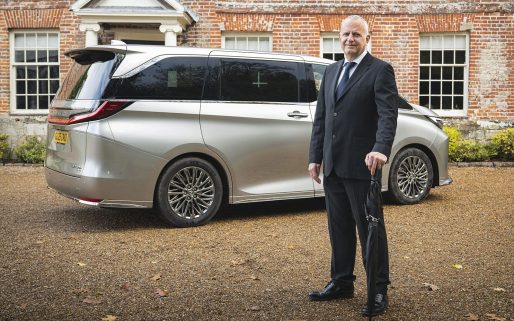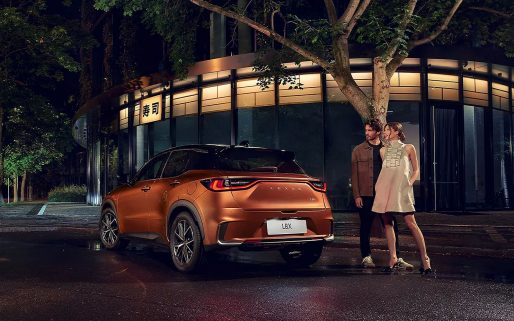 As the former owner of a Toyota supplier, Ivor Vaughan is a respected expert on manufacturing and has visited many of the world’s major car factories.
As the former owner of a Toyota supplier, Ivor Vaughan is a respected expert on manufacturing and has visited many of the world’s major car factories.
In March, during a visit to Japan, he was given a rare insight into Lexus manufacturing when he went to the Kyushu plant. Here’s his account of the visit.
How did the visit come about?
My wife owns a Lexus RX450h and loves it, so I promised her that one day when we were in Japan, I’d take her to see where it was built.
I contacted Lexus Nottingham, where we bought the car, and asked if they could help arrange tour of the factory. They did a lot of work, and eventually it was agreed that we could go.
My wife loves her RX so much – she calls it her ‘precious’. I had to explain the Lord of the Rings link to our hosts, which took a little while.
Why did you want to show her where the RX450h was made?
I worked with Toyota a lot during my career, as my company [Rearsby Automotive] was a supplier to the factory in Burnaston. I’ve visited Japan many times and studied the Toyota Production System, so I’ve been on lots of factory tours around the world.
I’m always really impressed with how the Japanese manufacturers work.
Tell us about the visit.
We’d been in Japan for a few days, starting in Tokyo then Hiroshima and we went to Kyushu on the bullet train.
I was surprised when we arrived, as the factory is actually almost up in the mountains – it’s the only factory I’ve seen that is in a semi-rural location, so to me, it was quite stunning.
We were given a fantastic welcome and were taken around the factory in an open electric vehicle that had a Lexus ‘interior’ – it was very luxurious.
We saw the production line and the paint shop and we were given a chance to really look at what went on. I really like the RX, but even I was surprised and impressed by the lengths the staff go to to ensure quality.
Were you impressed with Kyushu?
The Toyota workforce and Toyota Production System is unique. Kyushu had all the Lexus models on a single production line, which is really quite something to see.
I love Japan. I love the people, the precision, the orderliness, and the cleanliness. I always say that Japan’s cars reflect the people and that was definitely the case here. Everyone knew exactly what they were doing and it shows in the final product.
How did you see this commitment to quality?
One thing I was surprised with was the level of cars that don’t meet the required standard of paint finish the first time around. Apparently, an average of one in 10 is sent back, but once I saw the level of checking that goes on I wasn’t surprised.
It’s not that the quality of work isn’t good enough, it’s that the standards are so much more exacting than you’d see at a more mainstream manufacturer.
Paint is an imprecise art – the workers have to be able to detect defects of 0.5 millimeters, which you may struggle to do even with machines.
Creating an atmosphere where staff are trained and given skills like that is actually often more cost-effective than programming machines, which can break down. Any factory can be highly automated, and a lot of car companies are seduced by technology, but it is that focus on efficiency that makes Lexus and Toyota so successful. Obviously there are some areas where a robot is better than a human, such as welding, but it’s not always the case. They recognise that making a person’s job easier is usually better than using a robot, so there were relatively few robots on the production line.
Were you surprised at the level of automation?
Yes, though it was less than I expected. They had a lot of variety coming down the line, from coupes to the RX, so if you introduced too much automation the complexity would be enormous, which would affect output and quality.
The best example of the staff and robots working together I saw was when the windows were put on. The robot applies a bead of sealant to the window, and with the help of a support that takes the weight, the workers put it in place it with absolute accuracy. The final job was to hit it, quite hard – the feel and sound of this told them whether it was done perfectly. It was amazing to watch and the whole process took about five seconds.
How did it differ to other factories you’ve seen?
I’ve been to other factories, but this was the first one where I really noticed just how clean and calm it was.
One thing that I noticed was the lack of a smell. I started my career as an apprentice for British Leyland at Longbridge, One of my overwhelming memories from that time was the smells throughout the plant and the near-constant sound of the air spanners.
There were no smells or fumes, and all of the jobs that were done by air spanners are now done with electronic tools. It feels strange to me, but it’s probably a nicer place to work.
From the outside, the factory looked really ordinary, but what goes on in there was really quite extraordinary in terms of quality and productivity.





What a fascinating insight! I had most one Lexus, an LS460 that I bought new in 1994. It was made to a notably higher standard than the fat more expensive BMW 750iL and Mercedes S500L that succeeded it. During that same period, the level of defects, warranty claims, and consequent weeks off the road that I endured with the four Range Rover Vogues that I owned from new were ridiculously and intolerably high!